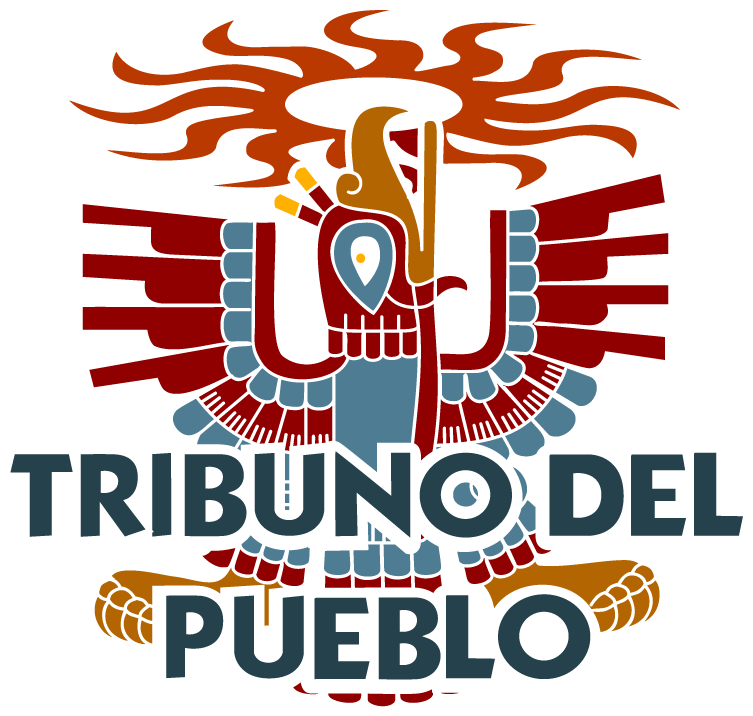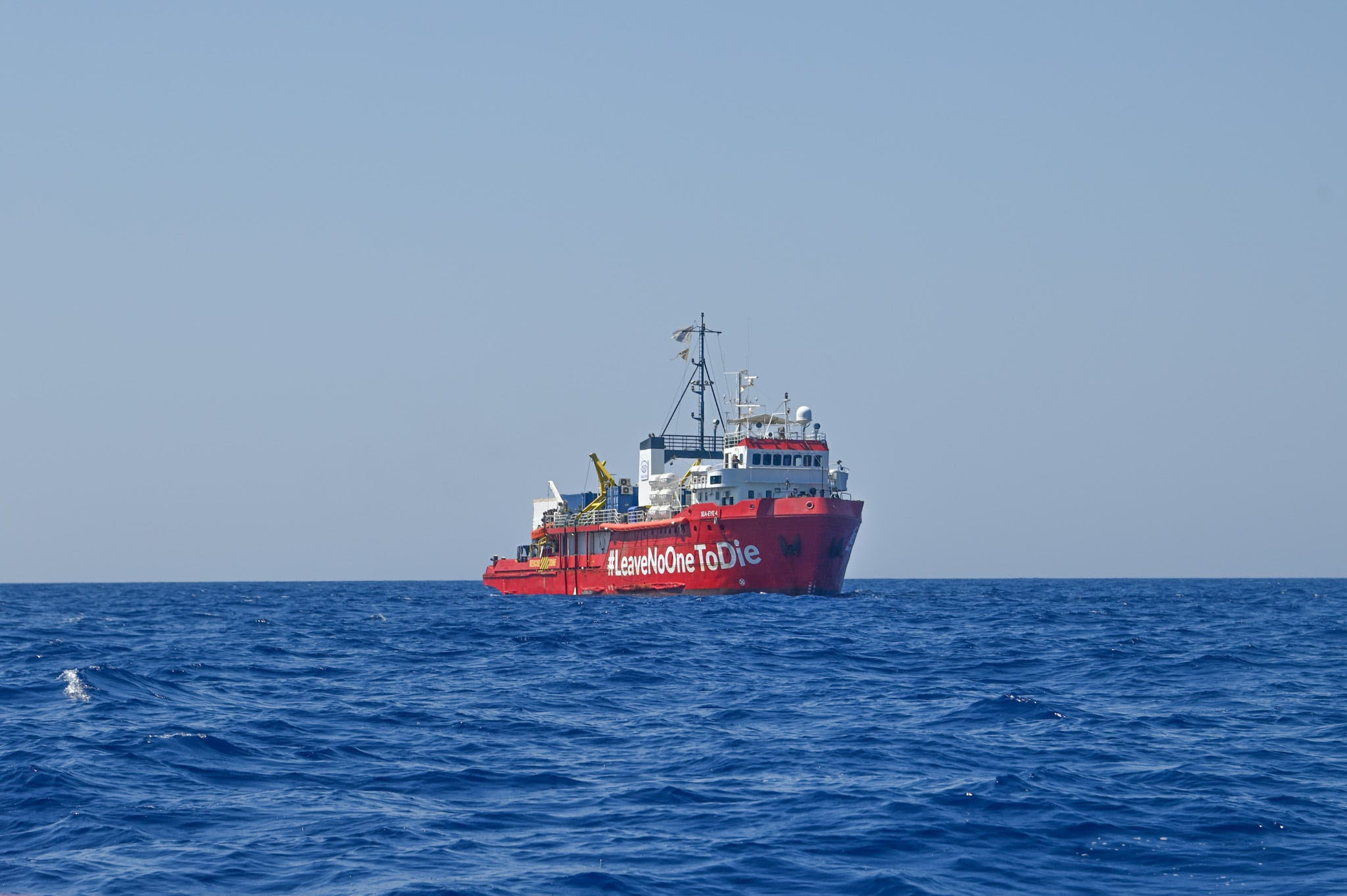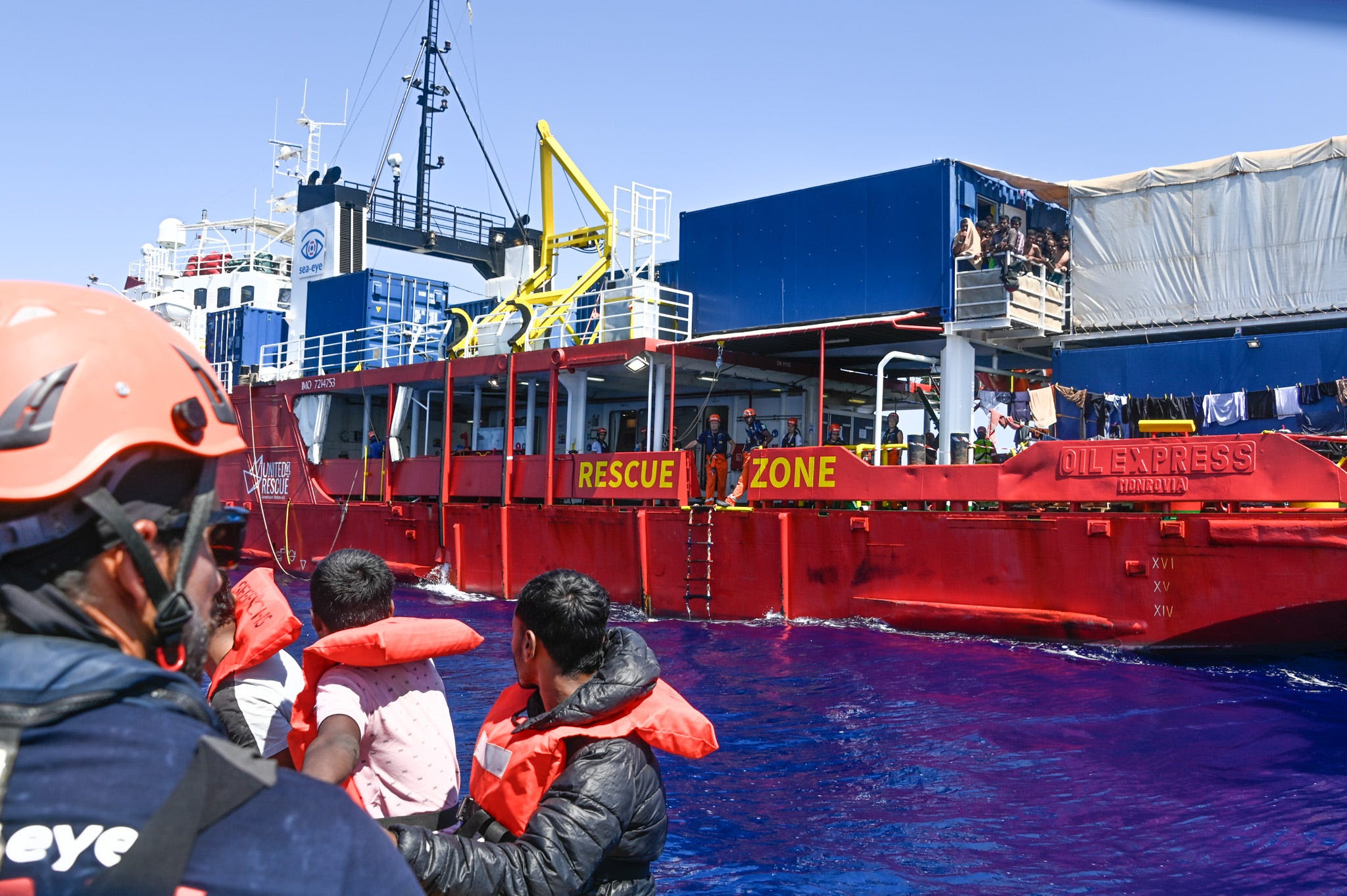On August 21, I received an email from writer and researcher Nathan Akehurst, who told me he was on a search and rescue boat in the central Mediterranean, which has become the world’s most dangerous border. You might remember Nathan; he appeared on a Border Chronicle podcast on climate change and border technology last year. There were 114 people aboard the rescue ship, Sea Eye 4. As we wrote back and forth, the ship was granted access to dock at the port of Salerno, Italy. Then Italian authorities detained the ship and fined the crew. As Nathan wrote me, this was the “third ship it’s happened to this week, quite a big/bad story.”
Every year in the summer, as we’ve documented here at The Border Chronicle, border crossings become even more treacherous. In the U.S.-Mexico borderlands, summer is when most people die, whether facing off against Operation Lonestar on the Rio Grande or the long-standing deterrence strategies of Operation Gatekeeper in the California and Arizona deserts. In the Mediterranean, this year nearly 2,000 people have perished. In June, we interviewed author Lauren Markham about one of the worst instances, which happened off the coast in Greece.
The thing about these border crossings is that they rarely make the news. The crossings happen in remote areas of seas and deserts where there are no television cameras and few reporters. Some of the most vivid and brutal stories—such as the story told below of a desperate man swimming to the rescue boat to escape hunger, thirst, and heat exhaustion—are rarely made public. These stories are happening all the time, these stories are happening right now.
For this reason, I jumped on the opportunity to interview Nathan, who is part of the crew and a media coordinator, and Joe Rabe, the medical lead for Sea-Eye, the organization behind the rescue mission. Below is their firsthand account of what they call “a hidden humanitarian emergency.”
Can you explain more about the boat and mission? Is it purposely a rescue mission? When did you first go out? What were you looking for?
We are part of a civil search and rescue fleet operating in the central Mediterranean, which is the world’s most deadly border. The would-be responsible authorities for sea rescue—whether it’s national coast guards or supranational bodies like the EU, with structures capable of organizing humanitarian response at scale—have at best largely withdrawn themselves from this arena and at worst are actively fueling the crisis. This year alone, over 2,000 people have lost their lives crossing. It took everyday people to decide that something had to be done, and sea rescue therefore falls to an overstretched and largely volunteer-dependent band of NGOs.
On August 12, we left Burriana, Spain, for a monthlong mission in Search and Rescue (SAR) Zone 3, which is the largest of the three central Mediterranean SAR zones and which covers a large area off the Libyan coast, from Buerat to Tobruk. Our mission was to search for and respond to distress calls and patrol the area. Our ship, Sea Eye 4, is a former offshore supply ship with a crew of 25, and it is one of the larger vessels in the civil fleet. She has previously sheltered hundreds of rescued people, albeit not without difficulty.
A variety of disciplines are required on board. A nautical crew operates the ship itself. The ship carries two RHIBs (rigid hulled inflatable boats), which are specialized for rescues and operated by a team that manages the first contact with the people in distress and the embarkation onto the mothership. A three-person medical team, a postrescue team, and our cooks attend to their needs once on board. We also have two field media coordinators who document rescues for both legal and campaigning purposes.
Once we enter the SAR zone, we keep watch at all times. We may get referred a distress call from AlarmPhone (a land-based NGO monitoring distress calls), or civil search planes from NGOs like SeaWatch or Pilots Volontaire, or the old-fashioned way, by a watchkeeper spotting a boat in distress through binoculars from the top deck.
Did you find people in need of assistance? Can you describe that scenario? What happened exactly?
Over three days, we successfully conducted three rescues, bringing aboard 114 people. It transpired that these boats had left Libya at the same time and those on board knew each other—there were some tearful reunions when they realized each other were alive and well. We will describe one specific rescue, our third, so readers get a picture.
We were searching for a distress case throughout the night. As we swept the area, our crew caught sight of it around lunchtime. It was a small, open, gray fiberglass boat, like one you would take lake fishing. It held 38 people. The two RHIBs made the first approach, ensuring them that we were here to help as soon as we came within range. Someone on the boat jumped in the water and attempted to swim to us—a potentially very volatile situation, endangering multiple lives—and the communicator persuaded them to climb back onto their boat. All of them were desperate for water, and they told us they had several unconscious people aboard, and one body.
 |
A picture of the boat from the third rescue after people were evacuated. (Photo credit: Nathan Akehurst)
We realized after several minutes that the person in question was alive but had been unresponsive for over a day. There were three other unconscious people on the boat. The rescue team embarked the four unconscious people onto a RHIB and rushed them to the ship. Once they had been lifted to the main deck, the medical team quickly triaged all four patients and brought them into our small onboard hospital. All were diagnosed with extreme dehydration and hyperglycemia due to time at sea without water, food, or protection from the sun; one suffered from severe heatstroke. In a few hours, their chance of survival would have been vanishingly small. Luckily, the medical team was able to stabilize all four patients within the day but nevertheless had to continue treatment and observation until the day of disembarkation.
In the meantime the other 34 people had to be registered, given food or water, assigned places to sleep, undertake a safety check, and be welcomed aboard.
Could you tell us about the people you rescued? Where were they from? Do you have any testimonies as to why they were on the move?
Most of our rescued people were from Bangladesh, with a few from Palestine, Egypt, and Syria. There were a range of stories. One man had fled after seeing his father killed in a local feud and his own life threatened. Others were desperately looking for work; often they had been provided the false promise of visas and employment in Dubai, and eventually ended up entrapped in situations tantamount to slavery in Libya. Many of those on board had met in hellish conditions in a Libyan camp and made the decision to flee together. Such camps are host to people from all over the world, with a constellation of stories. A succession of escalating or long-run conflicts, such as those in Sudan, Eritrea, and Somalia, have added to numbers on the move this year.
For people brought aboard in parlous states, they were up on their feet surprisingly quick, and keen to participate in life aboard. While they were recovering from the torments of their journey, they were given the opportunity to wash their clothes, play card games, organize a makeshift barbershop, clean their own sleeping area, and engage in general chatter. Such activities are crucial for mental health care and regaining a sense of dignity after the dehumanization most of them have experienced in Libya. Many of them were excited about going to Europe and expressed (possibly misplaced) belief in the kindness and goodness of people and systems there.
Could you tell us about how the border functions in the Mediterranean? What is it like to come across border guards? Did that happen to you here?
It’s a complex system but can be very broadly simplified into a few layers. First, there is the system inside Europe itself. People can still access their right to seek asylum once they arrive, which is part of why so much effort goes into preventing them ever arriving. That right, though, is undermined and heavily qualified (most recently in the new European asylum pact) through systems of arbitrary deportation, a growing archipelago of squalid detention camps, or simply abandonment without access to social support. Then there are the European border states, which have withdrawn rescue assets while arming their frontiers with walls, advanced surveillance systems, and border guards that routinely carry out abuses. Interlaced with state action is Frontex, the EU’s border force, currently becoming Europe’s largest agency.
During our mission, a Frontex plane had been circling near one of the boats in distress. It did not appear to have attempted to assist in rescue or even communicate the coordinates of the distress case.
Then there are the states bordering the EU, generally poorer countries like Tunisia, Libya, and Morocco, which are subcontracted by Europe essentially to carry out extreme violence that Europe avoids accountability for. The example of this that a rescue crew is most likely to encounter is Libya’s “coast guard,” whose main function is to illegally drag back boats attempting to flee Libya (or in one recent case, even abduct people fleeing from other countries). Their tactics include shooting at boats in distress or into the water. On previous missions we’ve encountered them, and they have repeatedly tried to force us to leave international waters outside their jurisdiction, including intimidating captains by threatening “dire consequences” if instructions are not followed. Five months ago the rescue ship Ocean Viking reported being fired on by the so-called Libyan Coast Guard during a rescue, deliberately endangering both the crew and people in distress (an account corroborated by Sea Watch’s observer aircraft).
There’s a bad joke that this “coast guard” is Libya’s only functioning state institution, but it hits at an important truth—this is a country that has basically no effective state services and is utterly impoverished, but Europe has chosen to prioritize providing it an advanced and almost completely unaccountable paramilitary to assault refugees.
Is your ship detained? Have the people on the boat been arrested? What is the situation?
During our rescues, we were consistently frustrated by authorities in Malta, Libya, and Italy, countries that are supposed to assist in rescue efforts. When calling for urgent assistance, we were told not to clog emergency lines and “put it in an email.” We asked Malta (the nearest responsible country) for a port of safety and were delayed, then refused. Finally, Italy granted us a port at Salerno—40 hours’ sailing and hardly ideal—but we were nonetheless happy to see our rescued people disembarked. Later that evening, Italian authorities detained the ship for 20 days and fined us 3,300 euros. This is the second time Sea Eye 4 has been detained this year. We were one of three rescue ships detained that week, in a politically motivated decision that will cost lives.
We were detained under the new Piantedosi law, which mandates immediate return to port after just one rescue. (It should not have applied in our case; we were not in the Italian rescue zone.) It forces crews to make an impossible choice: Should you ignore a distress call and risk lives in the present, or risk detention and the ability to save lives in the future?
The loss of 60 operating days during high summer can’t be overstated—even at full capacity, the civil rescue fleet is run ragged, and we were the only asset in SAR Zone 3. This is not normal sea rescue work—most coast guards are more used to dealing with lost fishing vessels or tourists trapped on cliffs. These are search areas covering hundreds of miles in open sea, looking for unseaworthy and overcrowded boats for people with both short-term potentially life-threatening conditions and the physical and mental scars of war, torture, and exploitation. By withdrawing from the situation, European states have abdicated a basic responsibility.
And they know what they are doing. There’s been a shift in strategy from the high-profile arrests of search and rescue crews a few years ago, which were legally and politically damaging for right-wing governments. Now instead it’s fines, short-term detaining, and bureaucratic obstacles. (Refugees, however, are still routinely tried as smugglers for taking control of boats in distress.) They don’t want the civil fleet to stop existing—in fact, in some cases it can be useful for them to have NGOs doing work that states have stepped back from—but they do want complete control over when and how NGOs are allowed to work. And while Giorgia Meloni’s far-right Italian government is at the forefront of this, Italian governments of many parties have done similar things, and all effectively green-lit by European institutions.
What should people know about what’s going on here?
First, it’s a hidden humanitarian emergency. It is right on our shores but vastly underreported. Our institutions are quite literally getting away with murder. Second, it represents a coordinated global attempt to shrink the postwar international system for refugee protection, an achievement built out of the darkest days of last century, at a time when we need it more than ever to tackle issues of rising displacement.
And finally, migration gets used as a tool to manipulate people. It’s a smokescreen that governments across and beyond Europe use to scapegoat and distract from their own failings and their contributions to the compound crises we’re all facing, from economic breakdown to climate collapse. Migration control gets framed as an issue of cost—but the tens of billions pouring into highly lucrative border-control contracts for profiteers could be going to help people rather than harm them.
Most Europeans don’t actually want a graveyard on their shores. So there’s a huge responsibility on those of us who work on these issues and who understand what’s happening, to reach beyond our bubble, to popularize the issue, and to move the dial in favor of an approach that will save rather than take lives.










